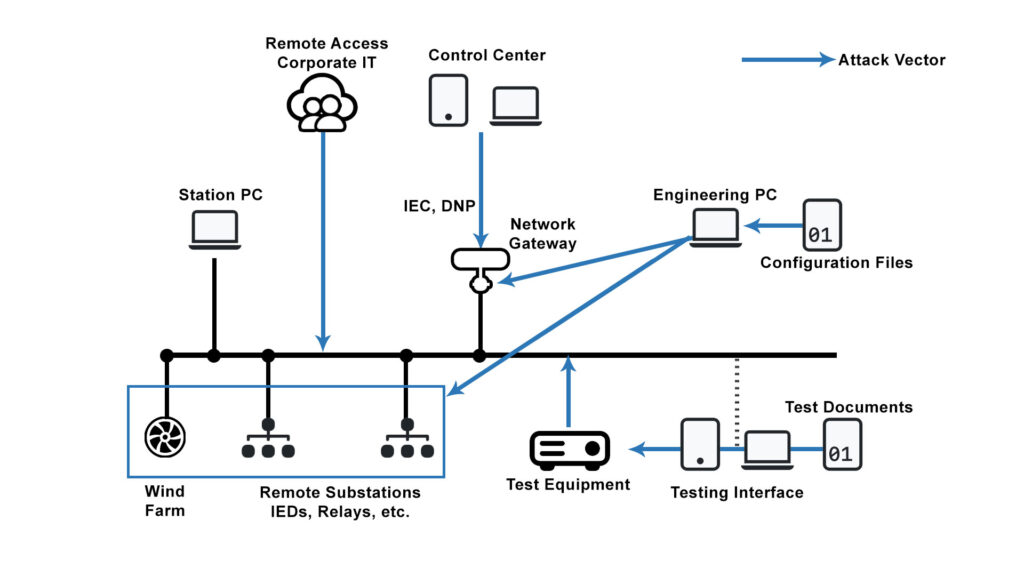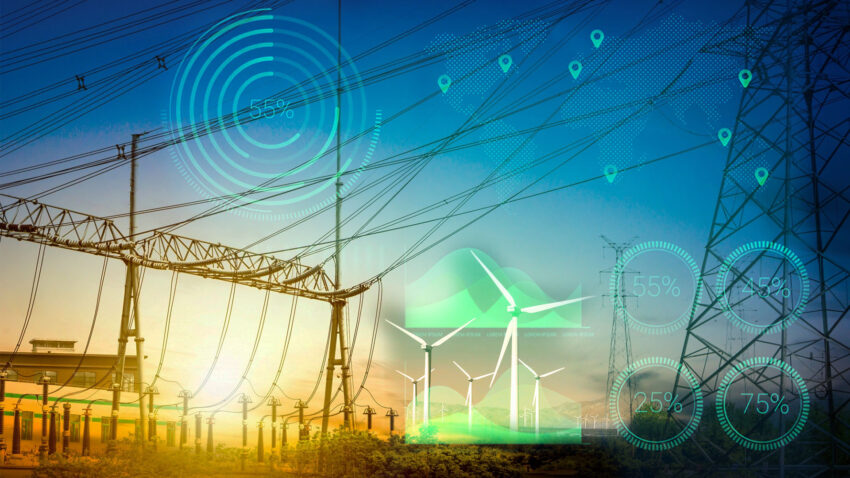
The industrial cyber threat landscape has irreversibly shifted this past year after numerous high profile attacks on the electrical grid caused millions of dollars in damages and left tens of thousands of people without power for several days. As a result, heightened attention is required to prioritize physical security and industrial networks with a focus on secure data protocols.
Substations are commonly located in remote areas, often unattended, and rely on computer-based monitoring systems for remote supervision and control. Damage or disruption to these systems can have wide-ranging consequences to society and the economy in repairs, fines, and other expenses.
The harm caused by these outages are felt by consumers and can have significant impact on the economy and could jeopardize national security. For this reason, its clear that critical infrastructure, such as generating stations, distributed energy resources, and substations present attractive targets for malicious actors.
Open Source Stack Provides Improved Security and Efficiency for Energy Asset Management
Energy Web, a non-profit organization that develops open-source, decentralized blockchain software, has partnered with security firm Kigen and mobile virtual network operator KORE Wireless to offer secure SIM cards for energy assets.
The new solution is based on Kigen’s OPEN IoT SAFE, an open-source method for third parties to use Energy Web blockchain features to store their private encryption keys and sensitive credentials.
The SIM card, which offers tamper-resistant protection, can securely communicate data at the packet level and authenticate transactional data flowing through a secure channel. This enables the ability to provide information to third-party Internet of Things (IoT) providers via a SIM card.
Blockchain Technology Offers New Possibilities for Data Security
This partnership is an important step in addressing the growing need for secure infrastructure, especially in the power distribution sector. By using OPEN IoT SAFE, third parties can store their private encryption keys and sensitive credentials in tamper-resistant crypto storage enabled through the open-source infrastructure, ensuring the security of data communications at the packet level and the authentication of transactional data.
By providing this tamper-resistance and end-to-end security for energy assets, the solution ensures that devices can communicate securely and authenticate transactional data. This means that electrical energy assets can operate more efficiently and reliably, reducing the risk of cyberattacks and improving the overall performance of the electrical grid.

A Revolutionary Step for the Energy Sector
The primary target for the new secure SIM is aggregators and original equipment manufacturers (OEMs) who produce and manage large numbers of IoT devices that are deployed in the field. However, this new technology has the potential to benefit a wide range of distributed energy assets, such as solar panels, wind turbines, battery energy storage systems, and beyond.
These devices could include smart meters, energy sensors, and other connected devices used in the energy industry. By providing secure SIM cards for remote devices, the solution ensures that they can communicate securely and authenticate transactional data flowing through a secure channel.
Additionally, the open-source approach can help to create a more decentralized environment for device-level security. By using a public, enterprise-grade blockchain, this solution can provide a secure and reliable method for organizations to store their private encryption keys and sensitive credentials.
Overall, the tools created by this partnership can help to improve the efficiency and reliability of transmission substations and other energy assets. It can also help to provide a more secure and resilient energy infrastructure.
The Future of Chip-to-Cloud Security in the Energy Industry
Blockchain technology can be used to improve cybersecurity across critical electrical infrastructure and industrial control systems by providing a secure method for storing private encryption keys and sensitive credentials. This can help prevent unauthorized access and tampering with critical systems, such as control systems for circuit breakers or gas turbines.
Protection relays are critical components of electrical power systems that are designed to detect and isolate faults in the power grid. These devices operate at the substation level and are responsible for protecting the grid against overloading, short circuits, and other potential hazards. By using tamper-resistant SIM cards and open-source blockchain technology, protection relays can communicate with other devices on the grid more securely and efficiently, with greater transparency.
The use of a public, enterprise-grade blockchain such as Energy Web can provide a more decentralized approach to device-level security, making it more difficult for cybercriminals to penetrate and compromise the network. By using the embedded SIM as a hardware wallet anchored to a publicly accessible blockchain, the technology provides tamper-resistant protection for authentication credentials used at the network level and secures data communications at the packet level.
The Role of Open Source in Securing Critical Electrical Infrastructure
Open source software is publicly available and can be freely accessed and audited by anyone, including security experts. This allows for greater transparency and accountability, as any potential security vulnerabilities or weaknesses can be identified and addressed by the community of developers and users.
Blockchain technology is based on an open source approach, allowing third parties to use Energy Web cryptocurrency features to store their private encryption keys and sensitive credentials in the crypto-safe enabled through the OPEN IoT SAFE infrastructure. This provides a means for organizations to build their applications via an open source tech stack focused explicitly on the energy sector.
Overall, secure SIM paired with blockchain can help improve the security and resilience of critical electrical infrastructure and industrial control systems, which is becoming increasingly important as these systems become more connected and reliant on digital technology.

